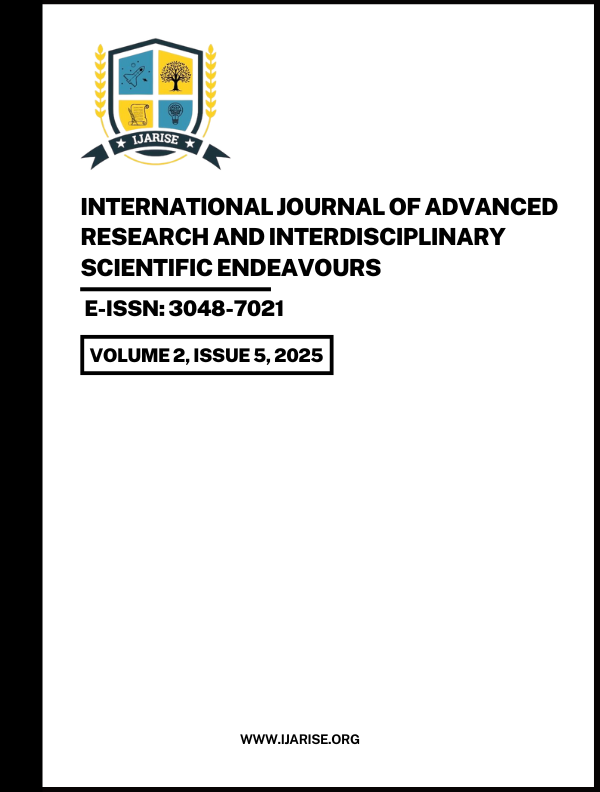Published 2025-05-30
Keywords
- Pollutant Dispersion,
- Advection-Diffusion Equation,
- Gaussian Plume Model,
- Atmospheric Transport,
- Steady-State Modeling
How to Cite
Copyright (c) 2025 International Journal of Advanced Research and Interdisciplinary Scientific Endeavours

This work is licensed under a Creative Commons Attribution 4.0 International License.
Abstract
This paper presents a mathematical framework for analyzing the spread of atmospheric pollutants from fixed sources using the advection-diffusion equation. Utilizing the Gaussian plume model, an analytical solution is derived for steady-state pollutant dispersion under the influence of mean wind velocity and turbulent diffusion. Numerical simulations illustrate how pollutant concentration evolves with increasing downwind distance from the source, exhibiting broader spatial distribution and reduced peak concentration due to atmospheric mixing. At shorter distances (e.g., 500 m), the plume is narrow and highly concentrated near the release height, while at greater distances (e.g., 2000 m), the pollutant becomes more diluted and widely spread in both vertical and lateral directions. These results align with physical expectations and validate the reliability of the model under idealized conditions. The approach provides a foundational methodology for environmental risk assessment, industrial site planning, and air quality regulation. Future extensions could incorporate time-dependent effects, variable meteorological profiles, and reactive pollutant dynamics to improve applicability to real-world atmospheric systems.


